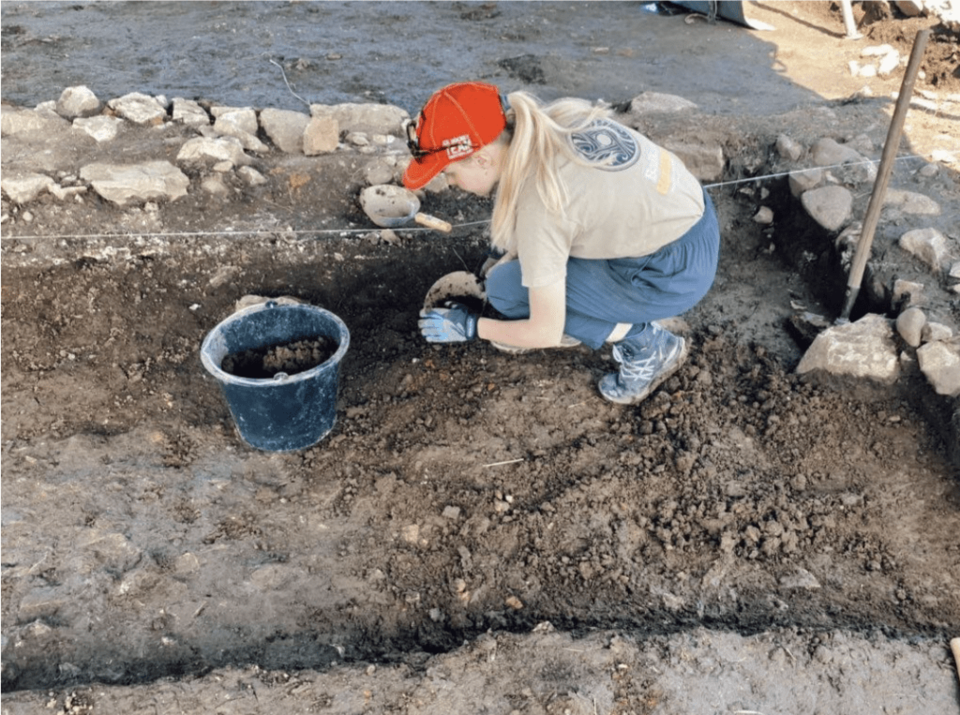Archaeologists use various methods to understand ancient diets to help gain historical context and better understand the past. To gain a better insight into how this is done and why, we spoke with Archaeology student Anastasia Temkina, who graduated from the University of North Carolina at Greensboro with a bachelor's degree in Anthropology and Archaeology.
Now, she is a current student at the University of South Florida, working towards a master's degree in Anthropology.
Anastasia broke down the overall concept of why professionals study diets:
"Throughout history, different societies consumed different foods, based on locally available resources, cultural views on food, class, gender, and age. Analyzing the diet of a group of people provides opportunities to see if there were differences in consumption within the group. We can combine the analysis of a person's diet with their burial context to see if it was a rich burial that had a lot of grave goods or not. That is how we can compare diets of higher and lower status individuals."

So, one way to achieve this result is through a stable isotope analysis. A stable isotope analysis measures the ratios of isotopes in body tissues, such as bones, hair, teeth, nails, etc. Based on a person's diet, an archaeologist can see different values of carbon, nitrogen, and other isotopes in their tissues. This appears as an isotopic signature, which will show the different food consumed and what proportions it was consumed in. When it comes to a plant-based diet versus a carnivore's diet, the difference is very clear.
Someone who only received nutrition from plants will have a lower nitrogen isotope value than someone who received nutrition from meat. When looking at a stable isotope analysis, it is also important to understand which body part the information is being extracted from. For example, since teeth form early on in life, someone's diet from childhood can be analyzed and understood. With bones, you can analyze the diet of someone's life for their last 10 years.
Still, the question remains of why this is so important to understand. Temkina managed to answer the question simply:
"Someone's diet tells us a lot about their entire history. If they ate more wheat or millet, how much animal protein they consumed, if they relied on terrestrial animals for meat or if they ate fish, whether the consumed fish was from a marine environment (salt water) or an aquatic environment (fresh water).
These details help us understand how people lived back then, and what conditions they lived in. Interestingly enough, in the Americas, those of higher status consumed more alcoholic drinks, which archaeologists can also observe. Also, assessing the diet at a site at a certain point in time allows the archaeologist to compare it with the diet at the same site but in a different time period. With time, there may be various changes in a society due to political, economic, or social reasons. Diet reconstruction can assist in understanding those changes."

When studying history, it is important to understand how people interacted with each other. Through this, trade relations can be understood by gaining insight based on the results of a diet analysis of whether or not a certain food source was available locally.
By studying the changes in diets throughout time, professionals can also see what new foods came about during what period in time, as well as consumption practices being carried on through migration. Other aspects that become clear are class and gender relations. In the 1970's, scholars such as Nikolaas van der Merwe, Stanley Ambrose, Michael DeNiro, Margaret Schoeninger, Anne Katzenberg revolutionized the field. While this was a huge advancement, the work has only begun.
The second generation of scholars implementing stable isotope analysis in their studies such as Julia Lee-Thorp, Lynette Norr, Michael Richards, and Robert Tykot, who is Anastasia's current MA advisor, focus on experimental work, testing bone degradation, and performing controlled diet studies in animals, which provide comparative data for future works.
Anastasia recommends learning about diet isotopes, to have an interesting perspective on past societies as whole, and to also understand how your own tissue can reflect what your diet is. As they say, you are what you eat. For more information about Anastasia Temkina and her studies, as well her insight into various archaeological subjects, visit her website




